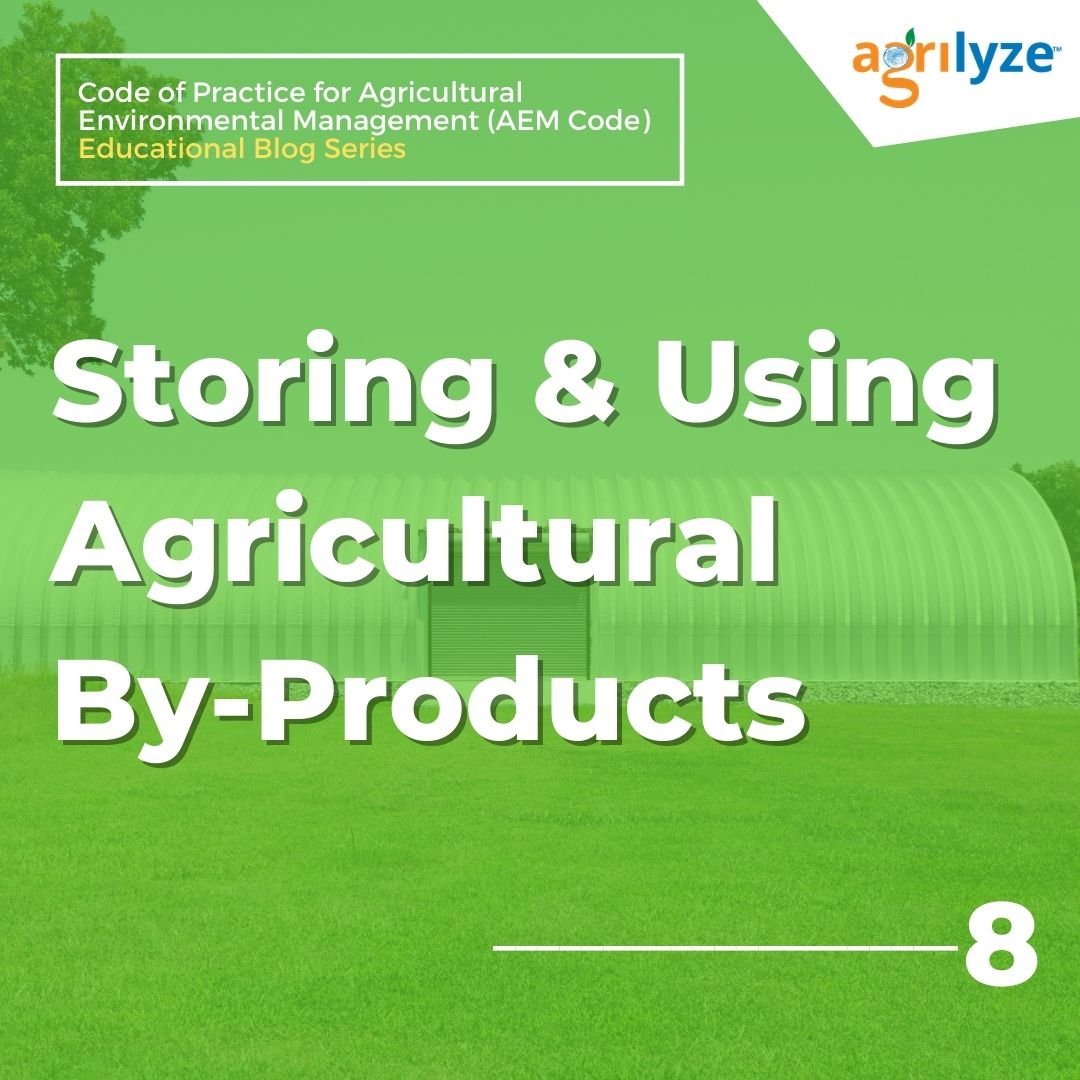Code of Practice for Agricultural Environmental Management – Storage and Use
According to the Code of Practice for Agricultural Environmental Management, you must store and use agricultural by-products in a certain way.
Some examples of agricultural by-products are:
- Manure and soiled animal bedding
- Products used in composting
- Vegetative debris such as leaves from trimming/pruning
- Used mushroom substrate
- Used soilless growing media
A few general rules to follow are:
- Ensure runoff water does not enter the storage area
- Prevent contaminants from entering watercourses, someone else’s property or going under the water table
- Ensure to follow minimum setbacks
- Prevent wildlife, pests, and domestic pets from having access to the storage area
Pain Points
As part of their regular operations, farmers and producers must build temporary or permanent storage facilities to protect and store waste, materials, produce, equipment, and end products from the environment’s detrimental effects. These areas are also used to prevent natural resources pollution and promote the safe-handling of farming inputs. By having storage facilities, farmers can ensure quality production of products and encourage the safety of their workers and themselves. Storing these items can also prevent issues down the road like theft or vandalism.
Aside from storing farm machinery (tractors, field implements, combines, etc.), farmers must store their animal feed, grains, fruits, vegetables, milk and eggs. As these products will be intended for human consumption, farmers must do their due diligence to ensure that temperature and humidity are controlled. This will assist products vulnerable to bacterial activity that could become rotten, germinate prematurely or create and absorb odours.
Waste
Agricultural waste products like plant residues, nutrient-rich runoff, manure, and mortalities are often stored, mostly when reused or recycled later. These are some key factors to consider when building storage facilities intended for waste products –
- Safety
- Protecting the environment
- Material handling efficiency
It is also important to note that the type of storage facilities designed for waste products will vary depending on climate, site-specific requirements (minimum setbacks) and local legislation.
Handling and Storing Manure
All animals generate waste, and it is considered a valuable by-product that can be used as a soil conditioner and as a nutrient source for essential elements like NPK. However, the nutrient value can vary depending on the animal (type and age), the nutrients found in their feed and how the manure is collected and spread for use on the farm.
Storage facilities for manure are necessary on many farms, as the waste materials will be stored until it is time to be spread in time to be taken up by crops. The storage requirements may even be minimal if the manure was purchased by other parties and moved to an adjacent site.
Manure can be stored in fields before it is used to fertilize crops. If stored for an extended period or in high rainfall areas, the manure piles must be covered from October to April. And if the field is prone to challenges like high water tables, flooding or close to wellheads, manure should not be stored there.
Manure storage facilities are permanent structures located in designated areas and operated to contain waste in an environmentally safe way until it is needed for field application. Facilities should be at least 30 metres away from a well or watercourse to minimize the potential of leaks or spills occurring near the storage unit. Manure also needs to be stored during the year when crops are less likely to take up the nutrients, or there is a significant risk of the manure entering surface waters or groundwater.
How Agrilyze Can Help
- Agrilyze works with farmers to map their farm (Map My Farm), so they can track where the manure is stored and used as well as critical setbacks outlined by the legislation and locations of key features such as high-water tables, flood-prone areas, and water bodies including aquifers
- By incorporating the soil test results in the tool, farmers can easily see their historical records of what happened in the field year over year
- Tracking images for an audit can be attached to tasks for the fields
- A nutrient management task can be added to collect the structure for the Ministries’ Nutrient Management Plan
If you have feedback about this post or would like us to explore a particular topic, please let us know by sending an email to [email protected].
Read the Code of Practice for Agricultural Environmental Management – Introduction (with infographic) – https://agrilyze.ca/code-of-practice-for-agricultural-environmental-management-introduction/



